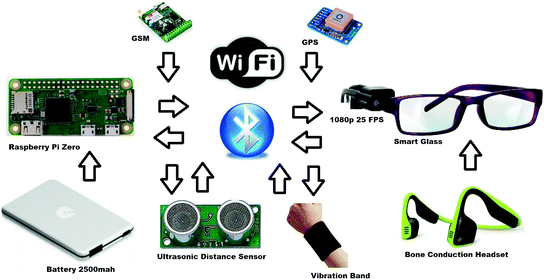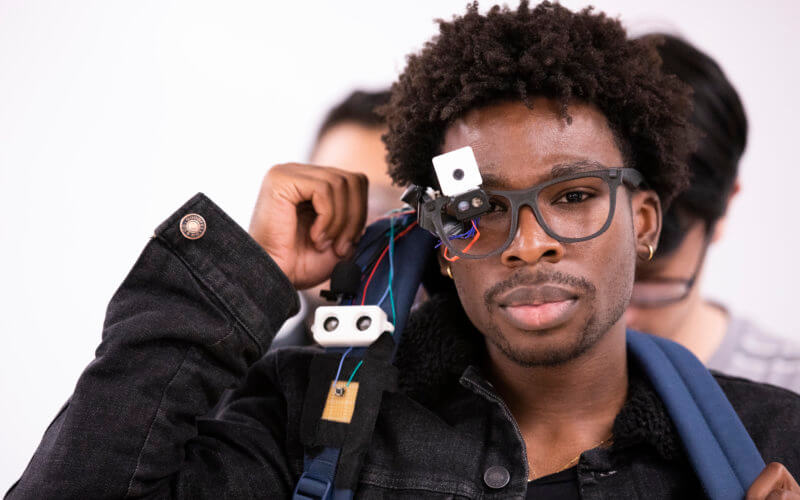Wearable Technology for Low Vision: Transforming How We Navigate the World
Wearable Technology for Low Vision: Transforming How We Navigate the World
Blog Article
Enhancing Access With Assistive Modern Technology for the Blind
The combination of assistive technology for the blind represents a crucial innovation in availability, essentially modifying exactly how individuals navigate their settings and involve with society. From display readers to ingenious wise walking canes, these devices not only improve freedom however additionally promote inclusivity in different spheres of life. As we check out the varied kinds of assistive devices and their substantial impacts on daily living, it ends up being crucial to examine how recurring technological improvements are reshaping the landscape of assistance for the blind community. What ramifications do these advancements hold for the future of accessibility?
Summary of Assistive Technology
Assistive modern technology describes a variety of devices and software designed to boost the capacities of people with specials needs, including those who are blind or visually damaged. This innovation plays an essential function in advertising self-reliance and boosting the quality of life for customers. By giving alternative techniques for accessing details and performing day-to-day tasks, assistive technology encourages individuals to navigate their atmospheres extra efficiently.
The growth and application of assistive technology embrace a range of concepts aimed at fostering access. These principles consist of user-centered design, which focuses on the needs and choices of the individual, and the integration of modern technology into daily activities. Such advancements make certain that assistive gadgets are not only functional however likewise user-friendly and easy to use.
Additionally, assistive modern technology includes a diverse range of solutions, from low-tech choices like magnifiers to modern developments such as screen visitors and Braille displays. The recurring evolution of this field is driven by the demand to deal with the special obstacles faced by individuals with visual disabilities (Wearable technology for low vision). As technology remains to advance, the potential for improving accessibility and advertising inclusivity remains appealing, eventually adding to a more equitable society

Sorts Of Assistive Instruments
Numerous kinds of assistive devices are offered to sustain individuals who are blind or aesthetically damaged, each made to deal with details needs and challenges. These gadgets can be generally classified into 3 main types: low-tech, mid-tech, and high-tech solutions.
Low-tech devices include items such as magnifiers, Braille labels, and tactile maps. These are fairly basic devices that improve the individual's capability to communicate with their environment without requiring complex modern technology.
Mid-tech gadgets commonly include more advanced functions, such as electronic magnifiers and portable Braille note-takers. These devices can offer functionalities like speech outcome, permitting users to accessibility details a lot more effectively.

Effect On Daily Living
The availability of different assistive tools dramatically improves the lifestyle for individuals that are aesthetically impaired or blind, affecting their daily living in profound ways. By incorporating modern technologies such as screen visitors, Braille presents, and audio summary services into their routines, individuals gain greater autonomy and self-reliance. These devices facilitate accessibility to information, allowing people to perform daily jobs, such as reading emails, browsing public rooms, and delighting in media web content.
Furthermore, assistive tools empower individuals to involve even more totally in social communications and area tasks. The capacity to utilize mobile phones furnished with ease of access features enables seamless interaction and link with others. This connection fosters a feeling of belonging and decreases sensations of isolation.
In professional settings, assistive modern technology sustains productivity by allowing people to complete work anchor jobs efficiently. Devices like voice recognition software application and specialized zoom devices make it possible for individuals to get involved in the labor force on equal footing with their sighted peers.

Developments in Innovation
Recent technological developments have significantly changed the landscape of tools readily available for people who are aesthetically impaired or blind. The integration of artificial knowledge (AI) and artificial intelligence has actually provided rise to applications that boost navigation and object acknowledgment. Smart device apps can now use AI to identify and define surroundings in real-time, giving customers with useful contextual information.
Furthermore, advancements in haptic modern technology have actually resulted in the development of clever walking sticks outfitted with sensing units that spot barriers and offer responsive feedback. This equips customers to navigate their setting with enhanced confidence and freedom. Technologies in text-to-speech software application and braille display screens have actually improved the ease of access of electronic web content, allowing for seamless communication with various media.
Wearable modern technologies, such as smart glasses, are also making strides in aiding visual disability. These devices can offer increased truth experiences, superimposing essential details onto the user's area of view. Collectively, these improvements not just boost the lifestyle for people who are blind however likewise advertise better incorporation in society. As innovation continues to develop, the capacity for much more transformative tools stays on the perspective.
Future Trends and Innovations
As technology quickly advances, the future of assistive devices for individuals who are blind holds enormous promise. Innovations in man-made intelligence (AI) and artificial intelligence are poised to reinvent the way blind users engage with their environments. AI-driven applications are being established to improve item acknowledgment, permitting additional resources users to determine and browse their environments with higher simplicity and accuracy.
Furthermore, improvements in haptic feedback technology are making it possible for the production of tactile maps and navigation aids that give real-time details through touch. These developments not just boost wheelchair however additionally foster independence. Additionally, wearable gadgets furnished with augmented truth (AR) attributes are emerging, providing users visual information through sound descriptions, consequently bridging the gap in between the physical and digital worlds.
Moreover, the assimilation of clever home technology presents new possibilities for access, permitting people to regulate their living settings with voice commands or mobile phone applications. As cooperation between technology designers and the blind neighborhood continues, the concentrate on user-centered style will make sure that future developments are tailored to meet the distinct needs of this population (Wearable technology for low vision). The trajectory of assistive innovation promises an extra inclusive and empowering future for individuals who are blind
Conclusion
To conclude, assistive innovation plays an important role in boosting availability for people with visual impairments. The varied range of tools, consisting of display readers and clever canes, dramatically improves everyday living and fosters freedom. Continuous advancements in modern technology and user-centered style make link certain that these tools provide effectively to the one-of-a-kind demands of the blind neighborhood. As technologies progress, increased inclusivity and empowerment can be prepared for, ultimately improving the lifestyle for those impacted by visual impairments.
The combination of assistive innovation for the blind stands for an essential advancement in ease of access, essentially changing how individuals navigate their settings and involve with culture.Assistive modern technology refers to an array of tools and software made to enhance the abilities of people with disabilities, consisting of those that are blind or visually impaired. Wearable technology for low vision.As modern technology quickly advances, the future of assistive devices for people that are blind holds immense promise. The trajectory of assistive technology guarantees a much more empowering and comprehensive future for people that are blind
In conclusion, assistive technology plays a crucial duty in improving availability for people with aesthetic impairments.
Report this page